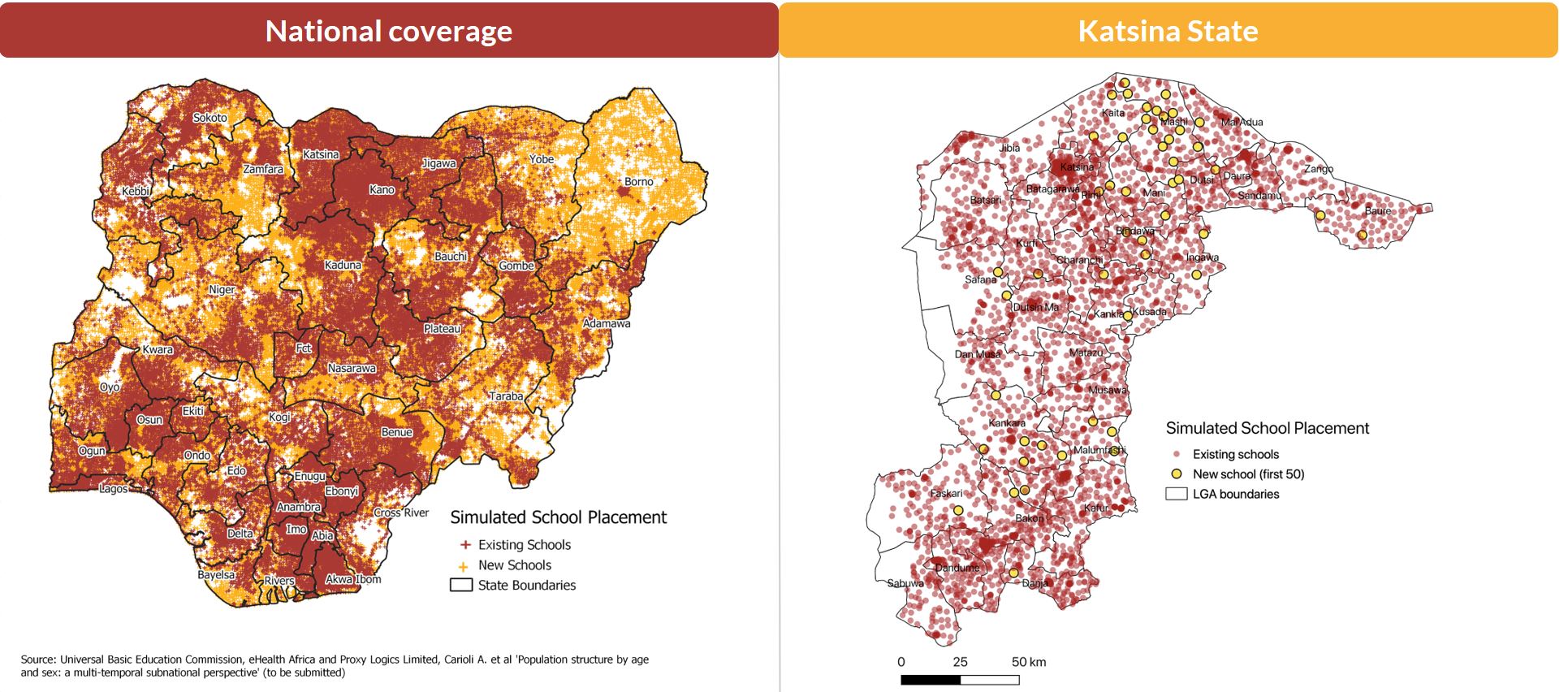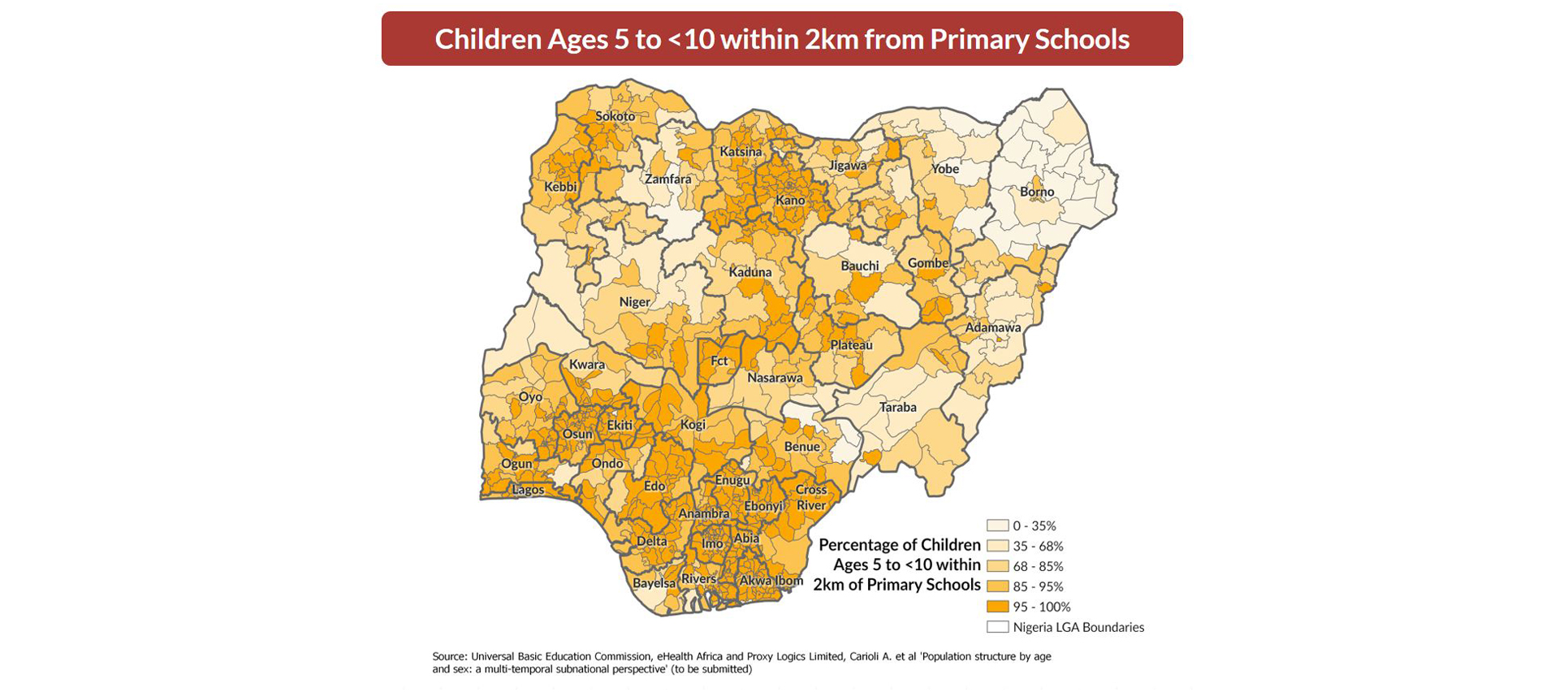How geospatial data can help solve Nigeria’s educational challenges
It is estimated that 10.5 million Nigerian children aged 5-14 currently do not attend school, due to a range of socio-cultural and economic factors, including insufficient access to and lack of capacity of educational facilities as well as high student to teacher ratios and overall gender marginalisation.
The Nigerian Universal Basic Educational Commission (UBEC) has developed a range of policies which aim to address the issues of school attendance, and established the Universal Basic Education Commission Act in 2004. This Act states that periodic National Personnel Audits (NPAs) of teaching and non-teaching staff should be carried out in all basic primary educational institutions in the country for policy making purposes.
On 16 December 2019, the Minister of Education, Mallam Adamu Adamu, representing the President of the Federal Republic of Nigeria, officially released UBEC’s 2018 NPA dataset. The launch was attended by a large number of key national and governmental organisations, including the Minister of Environment; the Minister of Humanitarian Affairs, Disaster Management & Social Development; DFID Nigeria; USAID, as well as other key stakeholders in the Nigerian education sector.
The NPA dataset contains geo-located national school data that includes details on each school, classifying school type, facilities available, number of teachers and attendance figures broken down by age group. The release of the NPA data is an important milestone for UBEC and Nigeria and marked the first time a Nigerian government institution has conducted country-wide geospatial data collection, capturing all school geo-locations and relevant characteristics. At the launch, GRID3 Nigeria presented its preliminary analysis on how the selection of new school locations can be optimised by combining the NPA data with the GRID3 gridded population estimates and harmonised administrative boundaries. The study revealed that for the aspired 99.1% enrollment of school-age children 5 – 10 years old who live within 2km of a school location, the country would need an additional 20,000 schools placed in strategic locations.

Figure 1: Simulated placement of new primary schools to optimise access for children aged 5-<10. Using NPA data, GRID3 gridded population estimates, GRID3 carried out a school coverage assessment and ran an optimisation for expansion model to produce a simulation of suggested new school locations at national and state level. The current maps displays results for the whole country and Katsina state. The model highlighted that over 99% of children would be within 2km of a school by adding 20,000 primary schools to the 108,000 existing ones, and 99.9% would be within 5km. Simulating the placement of additional schools permits to derive realistic feasible objectives and estimate the amount of resources needed to achieve them.
Combining NPA and GRID3 datasets has the potential to also address a number of other challenges in the education sector. For example, education quality can be assessed by analysing student to teacher ratios in order to help plan existing school expansions. Access to education can be evaluated through the use of geospatial data to measure the distance between schools and the school-age population. The NPA enrolment data can provide insight into the numbers and locations of out-of-school children, allowing targeted decision-making to ensure maximum coverage of education for those that need it the most. With the availability of the NPA dataset and collaborative efforts between UBEC, the National Space Research and Development Agency (NASRDA) and GRID3 Nigeria, governmental and non-governmental organisations are in a better position to plan and implement informed education interventions.
Currently, UBEC and GRID3 Nigeria are working to expand their collaboration with other key stakeholders in the education sector, such as Federal and State Ministries of Education and the State Universal Basic Education Board (SUBEB) so as to achieve the desired impact of education for all Nigerians and reduce the rate of out-of-school children. In addition, GRID3 is working closely with UBEC to develop a school placement optimisation tool to support their decision-making processes when determining where to build new schools and/or increase the capacity of existing schools.

Figure 2: The Nigerian Universal Basic Educational Commission (UBEC) recommends that all school-age children should not walk more than 2km to reach a primary school. They also established a set of guidelines to reduce the rate of out-of-school children. GRID3 worked with UBEC to calculate a set of ‘child-oriented indicators’ to aid decision making, focusing on accessibility, enrolment and out of-school prevalence. This map displays the percentage of children aged 5 - <10 within 2km of primary schools.
